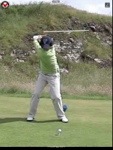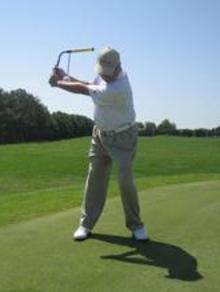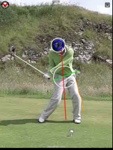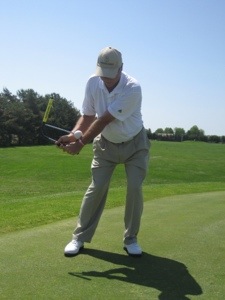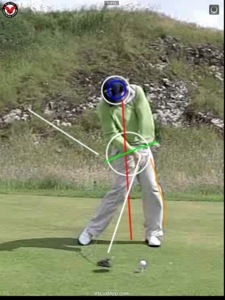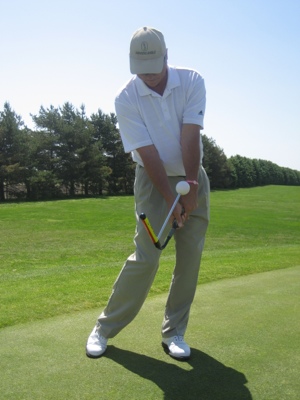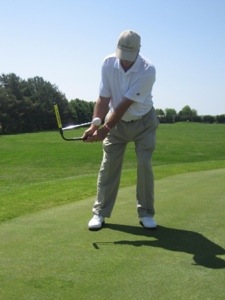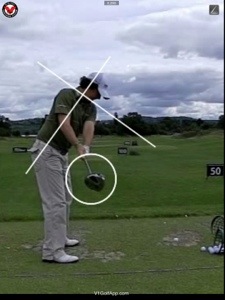Building on Rickie Fowlers golf swing Part 1, we are examining photos from the August 2012 issue of Golf Magazine. These are photos that will help you understand how to develop an inside delivery of your club head to impact.
In the last post, Part1, we took a look at Rickies “move away” position. I stated that I believe this “outside the hands” position begins and leads to a momentum “chain reaction” that moves the club on the downswing on an inside rather than outside swing path to impact.
Remember that all powerful golf swings begin with a connected move away of the forward shoulder in a “downward and backward” coiling movement. Note Rickie’s left shoulder position in picture 3.
Clearly, at the “left arm parallel position”, Rickies club is obviously in a much steeper position than in the “original shaft plane position” of picture 1. See below.
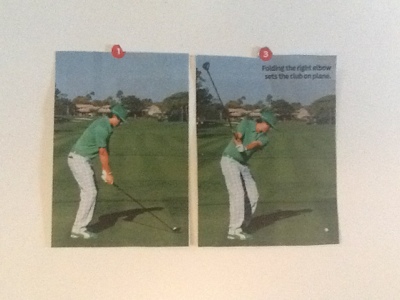
I think that putting the club in a steeper position at this point paves the way for a dropping down and backward movement to start the downswing, as seen in the swings of Jim Furyk and Sergio Garcia, both noted as great ball strikers, that have natural ” draw” ball flights. If you try this in practice, you would feel the loop movement, “outside to inside”. If you are currently coming “over the top” or “outside” on your downswing, you will feel the difference.
My point is as we will see in Parts 3 and 4 of this series, that this is an effective position to be in at this point in your golf swing. As I will show, it does in fact lead to an inside delivery of the club producing a ” right to left” or “draw” ball flight.
In the Amazing Angle Swing System training video, I state that “swing style” is not of significant importance to me. It is obvious that there are many different “looking” swings on the PGA tour. Eliminating your uncontrollable slice and establishing a consistent, effective ball flight is the significant issue.
Stay tuned for parts 3 and 4, and as always practice “slowly and deliberately”.
